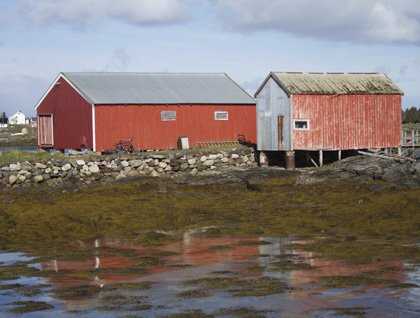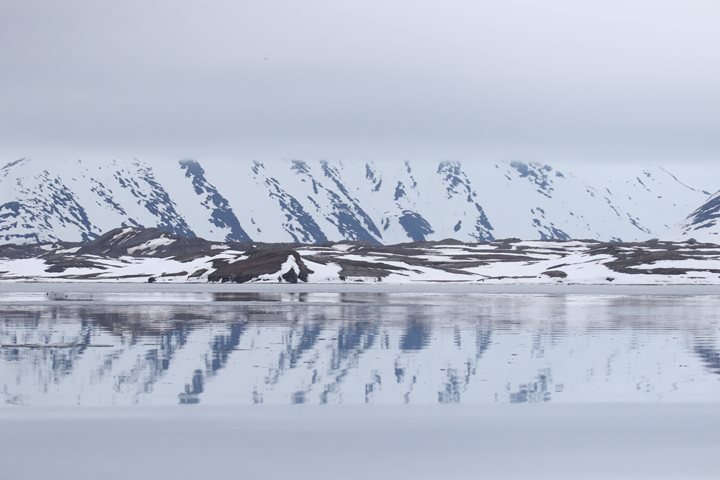The coast of Norway if stretched straight would go on forever due to its immeasurable curves and bends. Fjord with steep walls indent the mainland while along the outer coast low rounded islands are splattered along the entire length of the country. Today we had the excitement of experiencing both.
In the morning we anchored off the northern end of an island called Vega. This is the name of the main island but surrounding this mountainous island are literally thousands (6,500 to be relatively exact) of smaller islands, islets, and rocky shoals. For millennia the archipelago has been home to a large sea duck called eider. The male of this large diving duck is a spiffy black-and-white pattern with a pastel greenish wash on the head. The female is dull brownish of various shades. The male’s sole purpose is to mate with the female and once she starts laying eggs they disappear from any responsibilities. In creating the nest and a warm location for the eggs, the female plucks down feathers from its breast. The down also conceals the eggs and holds warmth when she goes off to feed.
At some point in history, around 1,500 years ago, early people discovered the insulative qualities of the down and used it to make clothing. Today that tradition is still part of the island’s culture and economy. In 2010 Vega was designated as a World Heritage site for its unique landscape and history. Our activities started soon after breakfast. Coming into the village we could see that we were in for a very photogenic morning. Colorful, mostly dark red buildings so typical of the Norwegian countryside stood stilted along the shoreline and reflected in the calm waters of the bay. A group set off for a long hike to one of the numerous bird reserves on the island. Following slowly behind the same track were a group spending more time looking for birds, first on the exposed mudflats and then into some of the forested areas of the island including a couple of freshwater lakes. Others took shorter strolls and nearly everyone visited the small museum and heard from a very knowledgeable local woman describing the down gathering and processing work. With the weather being so pleasant many stayed through the entire morning enjoying the stunning beauty and intriguing culture and history.
During lunch the ship moved from the outer coast toward the mainland and entered a fjord system called Vistenfjord. Being between high mountains and indented into the mainland the weather changed dramatically. But even with a bit of wind the captain was able to get us very close to the edge of the large Lomsdalen National Park. As we took the short Zodiac ride to shore showers of rain and sleet descended upon us. But this did not deter those wanting to go for hikes of various lengths and focus. Long hikers headed for the hills while medium and short walkers strolled along looking at the surrounding scenery and natural history. This was our first real time in a boreal forest of northern Norway and even though it was cool and damp, we had a chance to see and experience a piece of this wonderful country—Norway.







